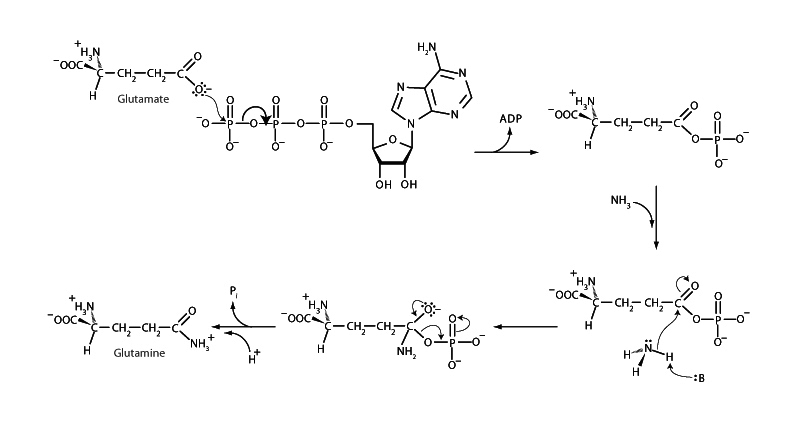
The biosynthesis of glutamine from glutamate by glutamine synthetase begins by phosphorylation of the glutamate side-chain to form an acyl phosphate. Acyl phosphates are high energy carboxylic acid derivatives (pg 58). Therefore, subsequent aminolysis of the acyl phosphate to form the amide side-chain of glutamine can occur with a negative free energy change.
Notice that the initial step of the phosphorylation of glutamate occurs via the phosphoryl transfer mechanism using a carboxylate nucleophile, not acyl substitution. As a consequence, in the acyl phosphate product of this step, the anhydride oxygen originates with the carboxylate not the phosphate.
* While we are focusing here on the use of a carboxylate nucleophile in phosphoryl transfer, we should point out that, as a general topic, amino acid biosynthesis will not be test on the new MCAT. In our opinion, the basics are fundamental to metabolic integration, so you should definitely know your way around a few simple syntheses. Be able to describe the synthesis of aspartate by transamination of oxaloacetate, for example, or glutamine synthesis shown here. However, the exam will definitely not expect you to know every step of the difficult ones like tryptophan synthesis or the synthesis of histidine, for example.